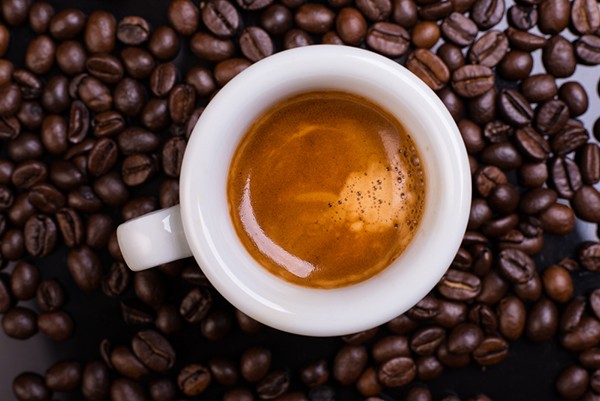Embarking on a journey through the world of coffee, espresso holds a unique place in my heart. It’s more than a beverage—it's an experience. I can still recall my first sip of espresso, enjoyed in a cozy café tucked away in the narrow streets of Rome. The barista, with practiced skill, prepared a shot that left me both energized and amazed. That small cup was packed with complex flavors I had never encountered before, igniting my deep love for the craft and science of espresso.
The Art Behind Espresso
What makes espresso so special is not only its intense flavor but the careful process involved in making it. At its core, espresso is a highly concentrated form of coffee, served in small, potent shots. The method involves forcing nearly boiling water through finely ground coffee beans under high pressure, extracting flavors often missed by other brewing techniques. This results in a rich and bold drink with layers of intricate flavors.
One of the defining features of a perfectly pulled espresso shot is the crema—the golden-brown foam that forms on top. This foam is a sign of well-extracted oils from the coffee, adding a velvety smoothness and slight sweetness that balances the bold bitterness of the espresso.
A Rich History Steeped in Tradition
Espresso’s origins trace back to Italy in the early 20th century. The invention of the espresso machine, credited to Angelo Moriondo in 1884 and further refined by Luigi Bezzera and Desiderio Pavoni, transformed how coffee was enjoyed. It allowed for quick brewing, perfectly suited to the fast-paced rhythm of Italian life. Over time, espresso bars evolved into social hubs where people gathered to enjoy quick sips of coffee alongside animated conversations.
Espresso: A Cultural Icon
When I visited Milan, I had the chance to explore the city's renowned espresso bars. What I discovered was that espresso is more than just a drink—it’s a deeply ingrained part of Italian culture. Italians often stand at the bar, exchange pleasantries, and sip their espresso quickly before heading back to their busy lives. This ritual of quick, yet meaningful, interaction with espresso fascinated me, and I decided to bring this experience into my own home by investing in an espresso machine.
Learning to master the art of pulling the perfect shot became a personal challenge. The grind size, tamping pressure, and water temperature all had to be just right. Every morning turned into an opportunity to refine my technique and become more immersed in the craft of espresso.

The Versatility of Espresso
Espresso isn’t just a standalone drink—it’s the foundation of countless coffee-based beverages. A simple macchiato with a small amount of steamed milk, or a luxurious cappuccino with equal parts espresso, milk, and foam, highlights espresso’s versatility. These variations allow espresso to adapt to a wide range of tastes while preserving its bold and distinctive essence.
Exploring Coffee Bean Origins
As I continued to explore the world of espresso, I became more curious about the origins of the beans themselves. The flavor profile of espresso changes dramatically depending on the region where the beans are grown and how they are roasted. For instance, Ethiopian beans often provide bright, fruity notes, while Brazilian beans tend to deliver nuttier, chocolatey flavors. The roasting process adds further complexity—light roasts maintain the bean’s natural characteristics, while darker roasts bring out rich, caramelized tones.
Sustainability and ethical sourcing also became increasingly important to me. Supporting coffee roasters who prioritize fair trade and sustainable farming practices added a deeper level of satisfaction to my daily espresso routine. Knowing that my love for espresso could have a positive impact on the lives of farmers made every cup more meaningful.
The Science Behind the Shot
Espresso is as much a science as it is an art. Achieving the perfect shot involves precise measurements—usually around 7 grams of coffee for a single shot—and an extraction time of 20 to 30 seconds. Deviating from these parameters can result in under-extraction, which produces sour flavors, or over-extraction, leading to bitterness. This demand for precision is both a challenge and a reward, making every well-executed shot of espresso feel like a personal triumph.
Though I’ve dabbled with other brewing methods, such as the Moka pot or AeroPress, nothing truly compares to the experience of a genuine espresso shot. These methods can produce rich, concentrated coffee that resembles espresso, but they never quite capture the full experience.
Sharing Espresso with Loved Ones
One of the greatest joys of my espresso journey has been sharing this passion with others. Hosting gatherings and serving a variety of espresso-based drinks allows me to introduce friends and family to the depth and complexity of espresso. It’s always a delight to see someone’s face light up when they taste a well-prepared shot for the first time, and it’s a moment that I never tire of witnessing.
:max_bytes(150000):strip_icc()/__opt__aboutcom__coeus__resources__content_migration__serious_eats__seriouseats.com__2018__06__20180613-coffee-vs-espresso-vicky-wasik-3-1500x1125-418fa2a14e7249b18040c2c34bf8569c.jpg)
Conclusion: More Than Just a Beverage
Espresso is so much more than just a drink. It’s a passion that brings together history, culture, science, and social connection. Every cup tells a story, whether sipped in a bustling Italian café or savored in the quiet comfort of home. Espresso is a cherished part of life—a reflection of tradition and innovation that enhances each moment it touches. Whether enjoyed alone or shared with others, espresso is a ritual that reminds me of life’s simple, yet profound, pleasures.
